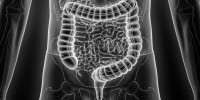
Angiotensin II in Inflammatory Bowel Disease
Inflammatory bowel disease (IBD) has made significant strides in understanding, yet abdominal pain remains a persistent challenge for patients. Researchers are now investigating the potential of angiotensin II (Ang II) and its receptors in activating nociceptors and contributing to visceral pain in IBD. Discover how this recent study explores novel pathways and offers hope for targeted pain relief in colitis.
Exploring Angiotensin II as a Potential Target for Pain Relief in Inflammatory Bowel Disease
Inflammatory bowel disease (IBD), encompassing ulcerative colitis (UC) and Crohn's disease (CD), has seen significant advancements in understanding. However, the persistent problem of abdominal pain continues to negatively impact the quality of life for patients. To address this issue, researchers have focused on identifying new pain-relieving medications that can target colitis-related pain. This article delves into a recent study that investigates the role of angiotensin II (Ang II) and its receptors in activating nociceptors and potentially contributing to visceral pain in IBD.
Understanding Colitis-Related Pain: During colitis, abdominal pain arises from the activation or sensitization of nociceptors by substances released from the inflamed bowel. This prolonged nociceptor activation leads to the development of visceral hypersensitivity, where pain is experienced in response to normal stimuli and amplifies painful stimuli. Identifying the mediators responsible for activating nociceptors in colitis and understanding the mechanisms through which they stimulate pain receptors are crucial for developing targeted pain treatments.
Unveiling Potential Mediators of Pain
To tackle this challenge, researchers conducted a study that involved examining gene expression in human colonic biopsies to map cell types, signaling pathways, and processes involved in UC and CD. Additionally, they explored mediators that could stimulate pain receptors expressed by colonic nociceptors. The study confirmed previous findings of elevated expression of angiotensinogen (Agt) mRNA in the inflamed bowel, particularly in UC. Furthermore, the researchers identified Ang II, a major metabolite of Agt, as a potential mediator of visceral pain due to the high expression of angiotensin AT1 receptors in colonic nociceptors.
The Role of Ang II and AT1 Receptors
While Agt and Ang II levels in the bloodstream remain unchanged in IBD, a significant increase is observed in the inflamed bowel, with the concentration of Ang II correlating with the severity of bowel inflammation. The local production of Ang II may be facilitated by Cathepsin G, an enzyme responsible for cleaving Agt and Ang I to form Ang II. Additionally, other immune cells such as macrophages produce Agt, providing a source of substrate for Agt-cleaving enzymes in inflamed tissue. Experimental studies have shown that stimulating the renin-angiotensin system and infusing Ang II promote colitis, while blocking the AT1 receptor improves colonic inflammation in animal models and humans with IBD.
Exploring Ang II and AT1 Receptors in Visceral Pain
Although the understanding of the role of Ang II and AT1 receptors in inflammation has grown, their function in visceral pain is not well-known. However, studies have revealed that AT1 receptors are expressed in a population of nociceptors and colonic sensory neurons, suggesting their involvement in visceral pain perception. Thus, the aim of the recent study was to investigate the pain-inducing properties of Ang II and AT1 receptors.
Study Methods and Key Findings
The study utilized colonic biopsies from pediatric patients with IBD, including UC and CD, and non-inflamed controls. RNA sequencing analysis revealed different gene expression profiles between UC and CD, highlighting unique immune cell types and signaling pathways associated with each disease. Enrichment analysis showed elevated plasma cells, tuft cells, and mast cells in UC, while macrophages and neutrophils were enriched in CD. Furthermore, the study focused on Ang II and its receptors, demonstrating their potential involvement in visceral nociception. In vitro experiments using mouse dorsal root ganglia (DRG) neurons showed that Ang II stimulated nociceptive neurons, with the response dependent on the AT1 receptor. The study also observed that Ang II increased colonic afferent activity in mice, primarily mediated through nociceptors.
Implications and Future Directions
Abdominal pain poses a significant challenge in IBD, necessitating the development of new treatment options targeting visceral pain. The recent study sheds light on the potential role of Ang II and AT1 receptors in visceral pain based on their expression in colonic nociceptors. Further research is needed to gain a comprehensive understanding of the mechanisms by which Ang II and AT1 receptors contribute to visceral pain. Such insights could lead to the development of targeted therapies for pain relief in colitis.
 Findings from our study identify AT1 receptor-mediated colonic nociceptor activation as a novel pathway of visceral nociception in IBD patients with UC. This work highlights the potential utility of angiotensin receptor blockers, such as valsartan, as treatments for pain in IBD.
Findings from our study identify AT1 receptor-mediated colonic nociceptor activation as a novel pathway of visceral nociception in IBD patients with UC. This work highlights the potential utility of angiotensin receptor blockers, such as valsartan, as treatments for pain in IBD.
Conclusion
Improved understanding of the molecular pathways and cellular interactions involved in IBD has paved the way for exploring novel targets for pain relief. The recent study discussed here highlights the potential involvement of Ang II and its receptors, particularly the AT1 receptor, in mediating visceral pain in IBD. By identifying these pathways, researchers aim to develop targeted therapies that can alleviate pain and enhance the quality of life for individuals living with colitis. Further investigations and clinical studies will be instrumental in validating these findings and translating them into effective pain management strategies for IBD patients.